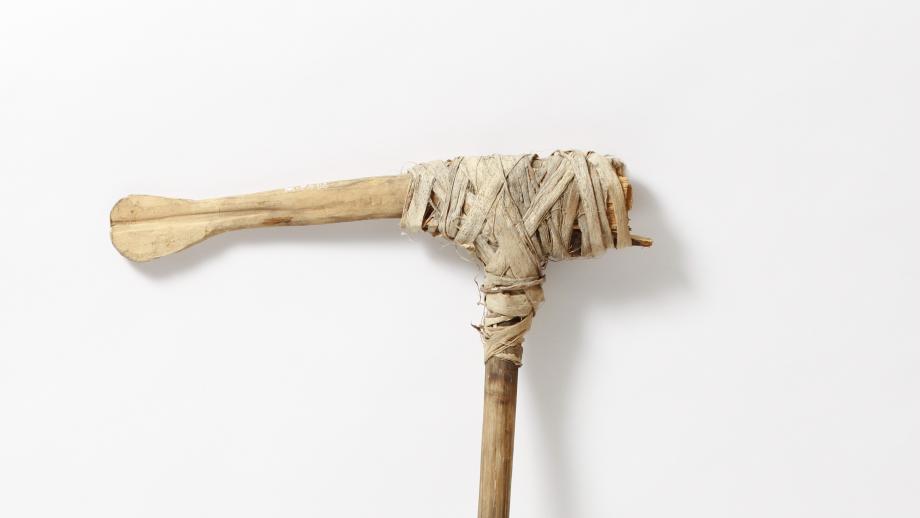Stone tools and axes
By the time Marie Reay began her fieldwork in the Waghi Valley in 1953, stone tools and axes were being discarded for "steel tomahawks and knives." Marie Reay's notes from that time indicate that older men were the most likely to still use stone tools, preferring the techniques of their youth. In carving certain fine and delicate work, such as geru boards, a special stone axe was used, according to traditional methods. It had a much smaller blade (1-1.5") which was set parallel to the handle.
Like other weapons, axes were used ceremonially as "strength-giving ornaments" in the ceremonial dances during the Konggol. Again, while many of the dancers had begun to use steel axes in the place of the traditional stone implements by the time of Reay's fieldwork in 1953, some still preferred stone axes. Below are photographs of axes and stone tools Marie Reay collected during her 1953-1955 fieldwork and donated to the ANU School of Archaeology and Anthropology collections. There is also a photograph taken on one of her later trips to Papua New Guinea of a man with a stone axe from the Marie Reay collection in the ANU Archives.















